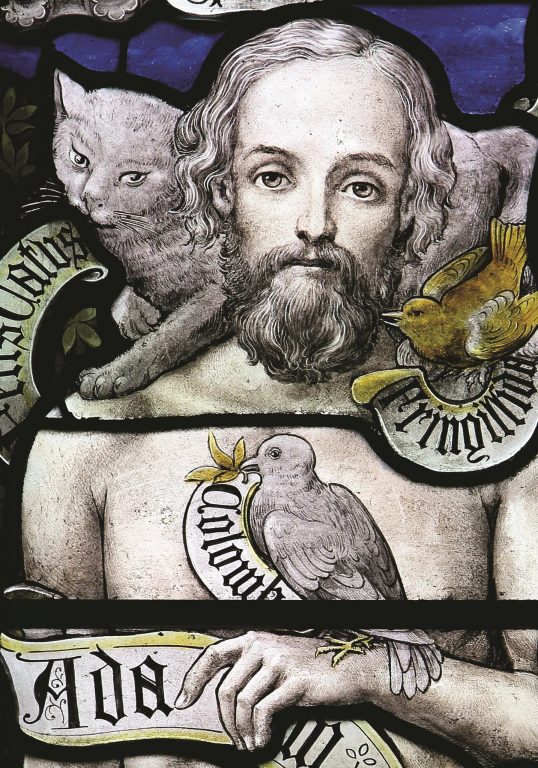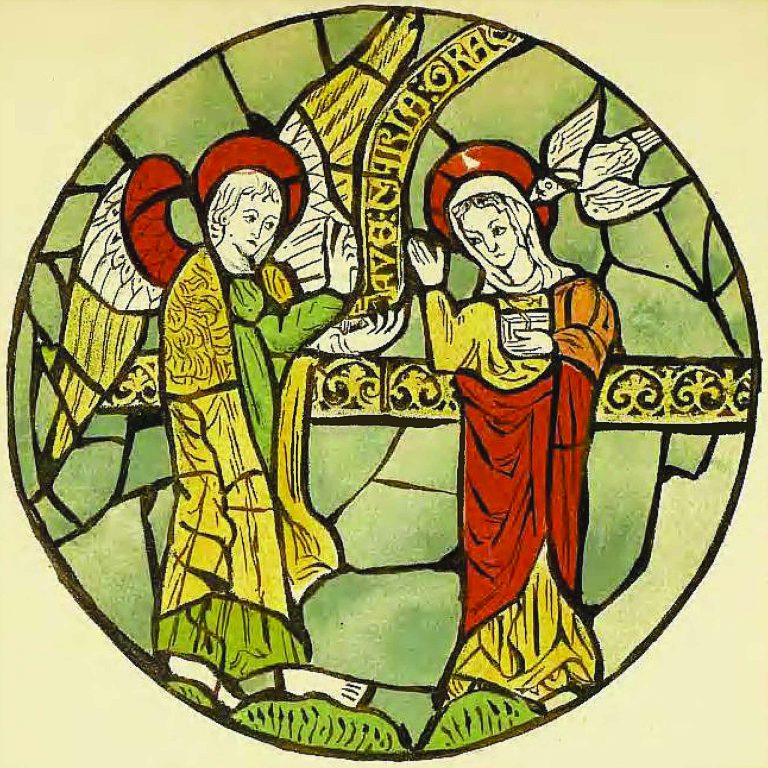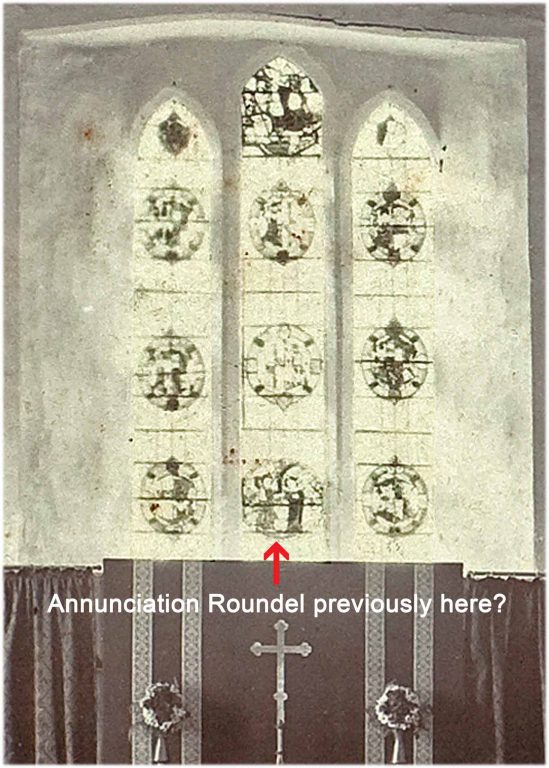The church has many stained glass windows- below are details of two, one Victorian and the other a rare medieval survival.. The second window on the left (northern wall) as we enter the church was designed by P.H. Newman and inserted in 1885 as a memorial to Daniel Higford Burr, owner and Lord of the Manor from 1849 till 1885 who built the present Manor House. He is depicted as Adam, naming the animals in the garden of Eden. The photo below shows the entire window and the inscription at the bottom gives details.
Other windows can be found by clicking on Heraldry in Aldermaston Church: by Mike Wall, 2007 together with Mr Wall’s notes on Heraldry: Mike Wall.
Also, a splendid array of often closely- related heraldic and religious windows in the Manor House can be found by clicking on: Aldermaston Manor House 1851- stained glass windows. Comments after the photographs
To magnify the images below, scroll down to where they’re repeated and click on them
The next close-up from the above focuses on Mr Higford Burr who has a cat draped around his shoulders. He was known to be a great animal lover and sometimes walked around his property with a snake coiled around him! His grave stone, in pink granite, is to the north of the church.
The lancet window furthest along the north wall to the left of the altar is of especial interest. Like all the windows it has been restored in the 19th Century but the central roundel is of medieval origin and thus a very rare survival. The next photo shows the whole window, with the ancient roundel inset to the right in its present (2019) condition. A banner rising from the Angel Gabriel’s hands has been blacked out at some time.
 As can be seen from the above sketch in Charles Keyser’s 1898 notes on the church, the Latin text was formerly “Ave Maria Gra”’, in full “Ave Maria Gratia Plena”, or “Hail Mary, full of Grace”. Why the blue colours are not depicted is unclear but Mr Keyser writes that he had the roundel transferred from the east window to its present lancet.
As can be seen from the above sketch in Charles Keyser’s 1898 notes on the church, the Latin text was formerly “Ave Maria Gra”’, in full “Ave Maria Gratia Plena”, or “Hail Mary, full of Grace”. Why the blue colours are not depicted is unclear but Mr Keyser writes that he had the roundel transferred from the east window to its present lancet.
The image below is an enlargement of an 1896 photo where the roundel appears in the centre of the bottom row.
The very last photo depicts the roundel as it would have originally appeared, with the greeting added and the iron bars removed.







No Comments
Add a comment about this page